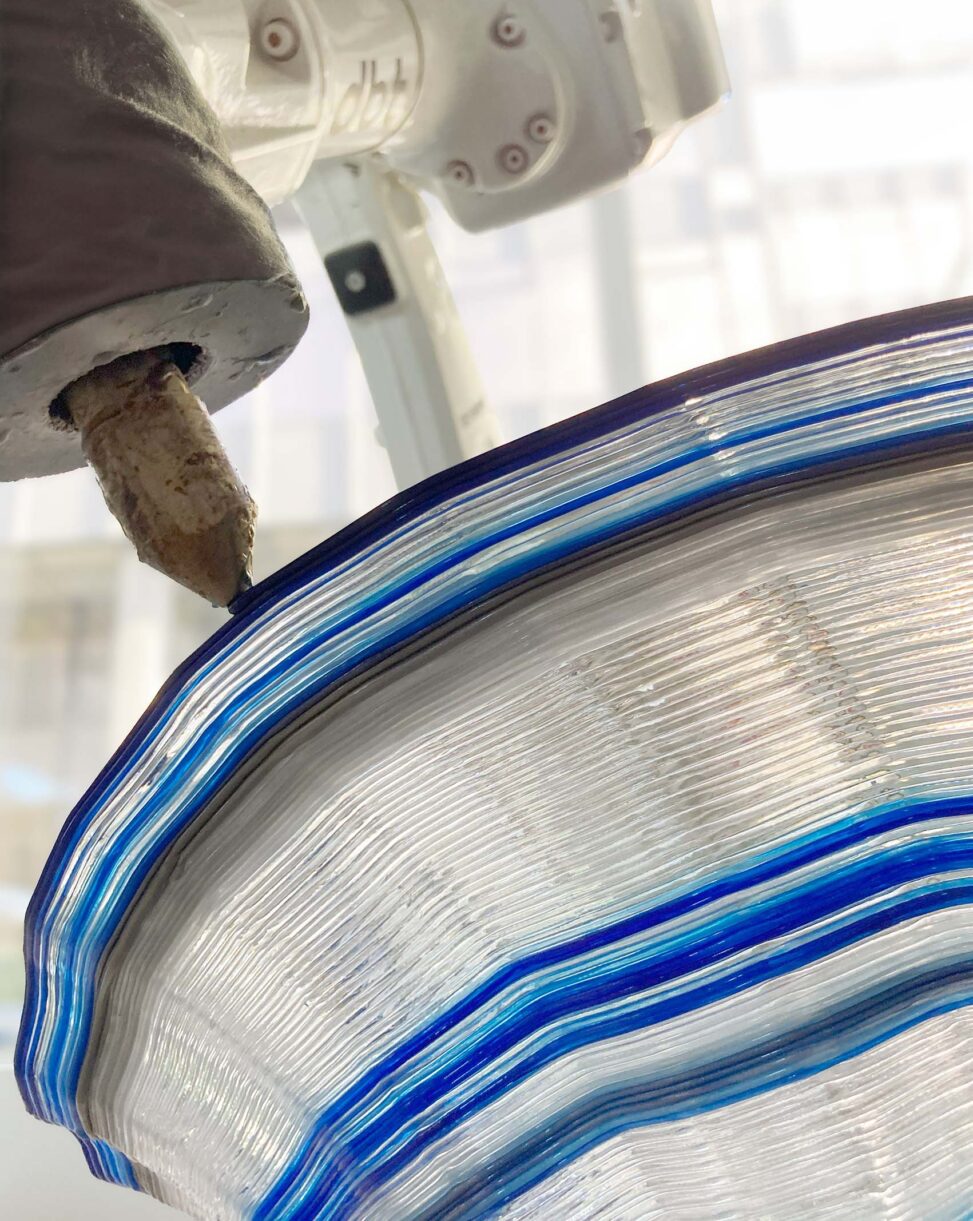An innovative 2.0-meter tall lightweight shell fabricated using non-planar robotic 3D printing.
‘Fluid Forms’ is a 2.0-meter tall lightweight shell fabricated using non-planar robotic 3D printing. Exploring the applications of robotic fabrication, this project showcases an innovative robotic additive manufacturing method that enables the printing of doubly curved thin shells more efficiently.
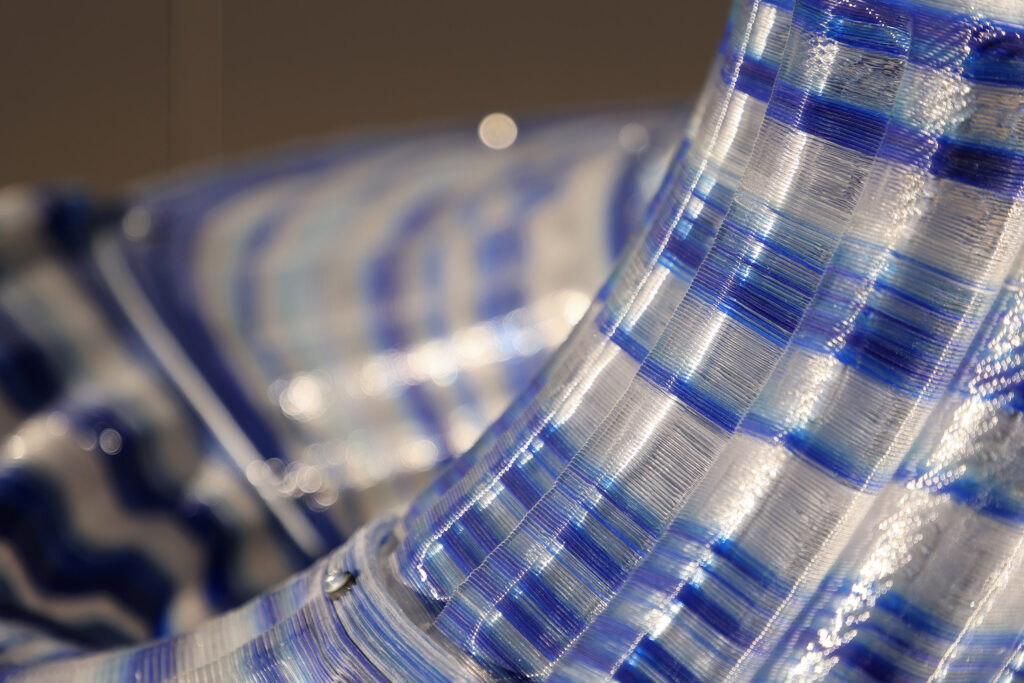
Technical innovation lies at the heart of this project, unveiling a new method for 3D printing shells using non-planar print paths, realized using the motion agility of robotic arms. The design of Fluid Forms is inspired by the Costa minimal surface, which belongs to a family of shapes that minimize area for a given boundary, resulting in a geometry with remarkable structural properties. This is then materialized with print paths aligned to its principal curvature directions. As a result, the fabrication process has significant advantages compared to planar printing; it reduces the need for sacrificial support and enhances precision and surface quality in high-curvature areas. The print path orientation is controlled through a vector-field optimization method that has been fine-tuned for the specific needs and constraints of non-planar 3D printing. To increase the rigidity of the structure, undulations are introduced that are orthogonal to the print direction. The prototype is put together using a dry-assembly method that facilitates easy disassembly for recycling after the project’s lifetime. This innovative approach opens new horizons for constructing large-scale lightweight structures in architecture with unprecedented precision and material economy.
Beyond improving production efficiency, the print paths elucidate an inherent property of the underlying geometry, showing a hidden layer of information and creating a new realm of unseen aesthetics that celebrates the agility of robotic manufacturing. The shape allows surprising look-throughs while walking around, at times taking the role of an opaque boundary and at times of a transparent curtain. With this, it gives an outlook on an architecture that blurs boundaries between inside and outside and is full of colors and surprises.
Fluid Forms in numbers:
- Structure: 40 parts held together using screws.
- Weight: 120 kilograms.
- Dimension: 200cm height and 140cm width.
- Material: translucent PETG plastic intermixed with blue and silver colors at varying ratios.
- 3D Printing process duration: approximately 3 weeks, a total of 140 hours of machining time.
The code used to generate the path layout of Fluid Forms has been published in the following GitHub repository.
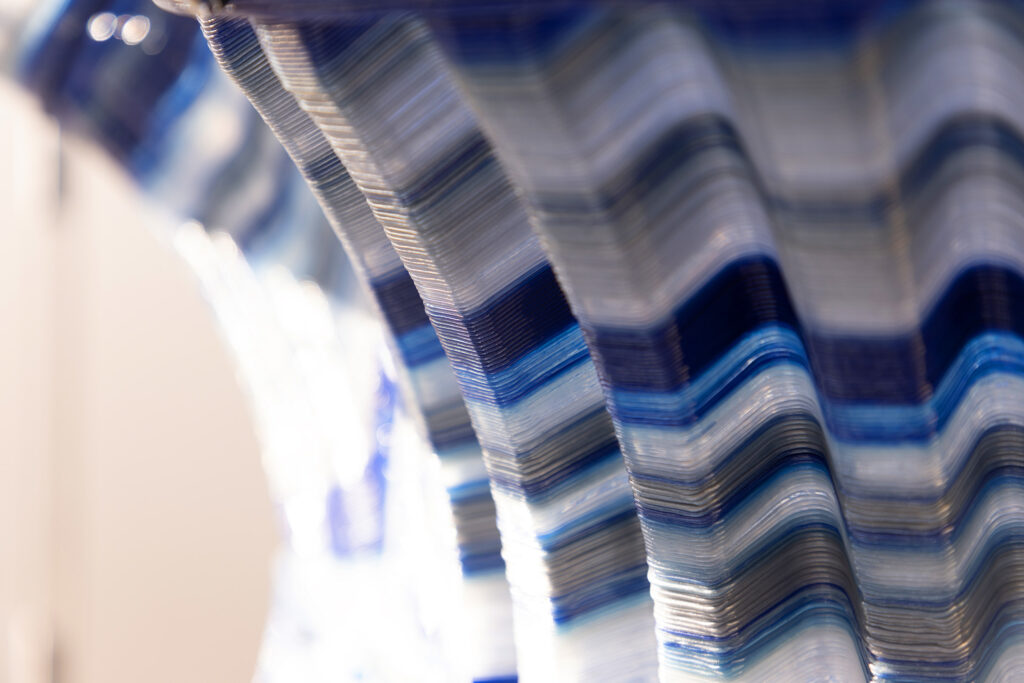
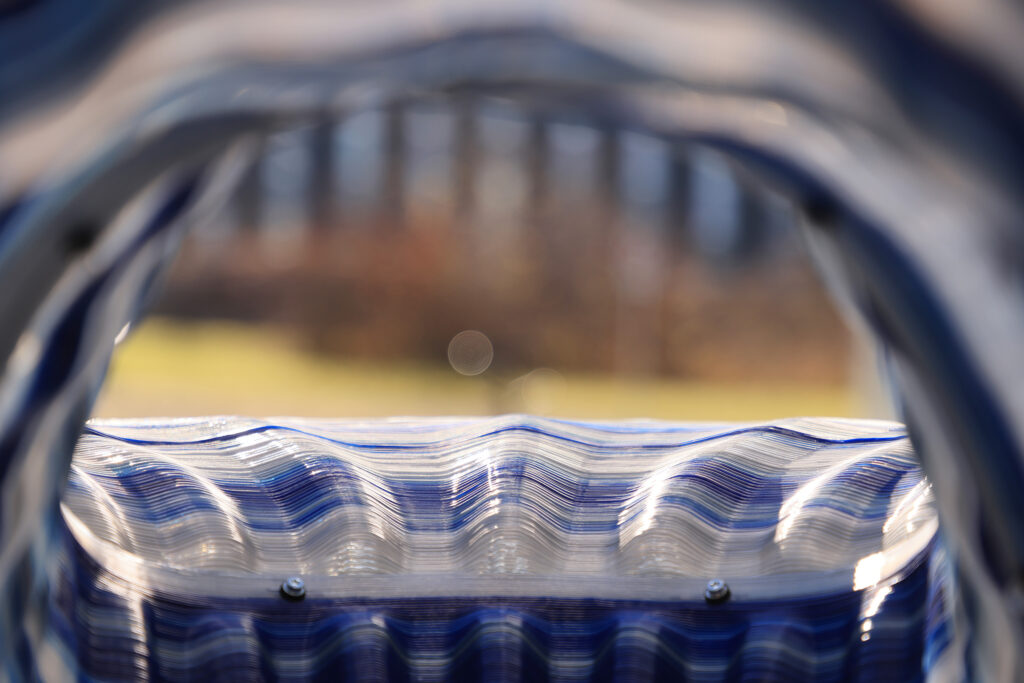
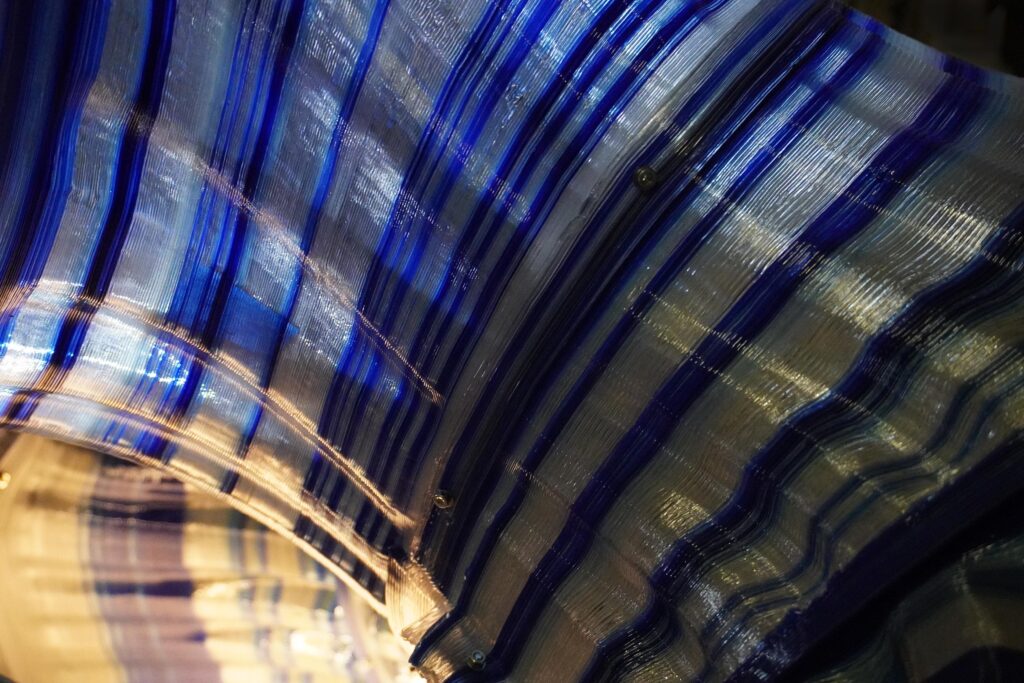

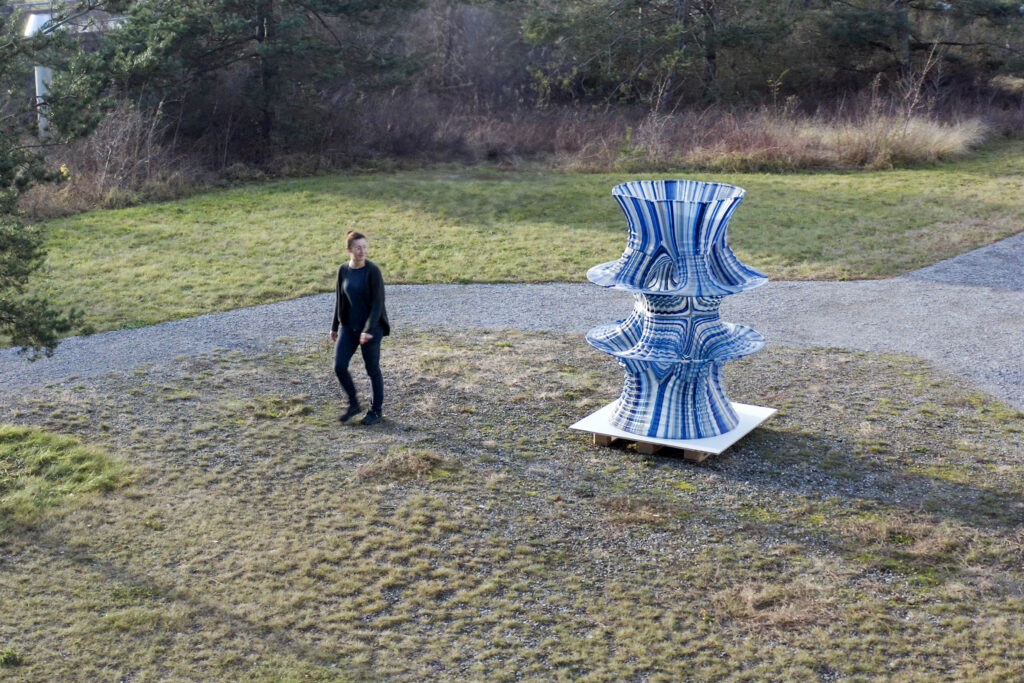
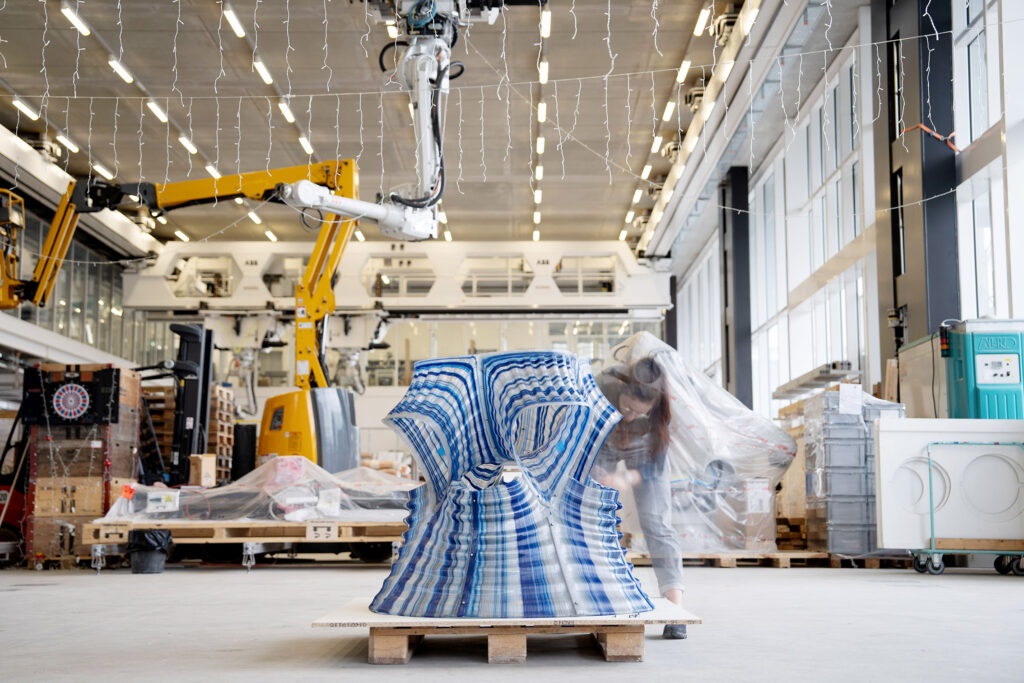
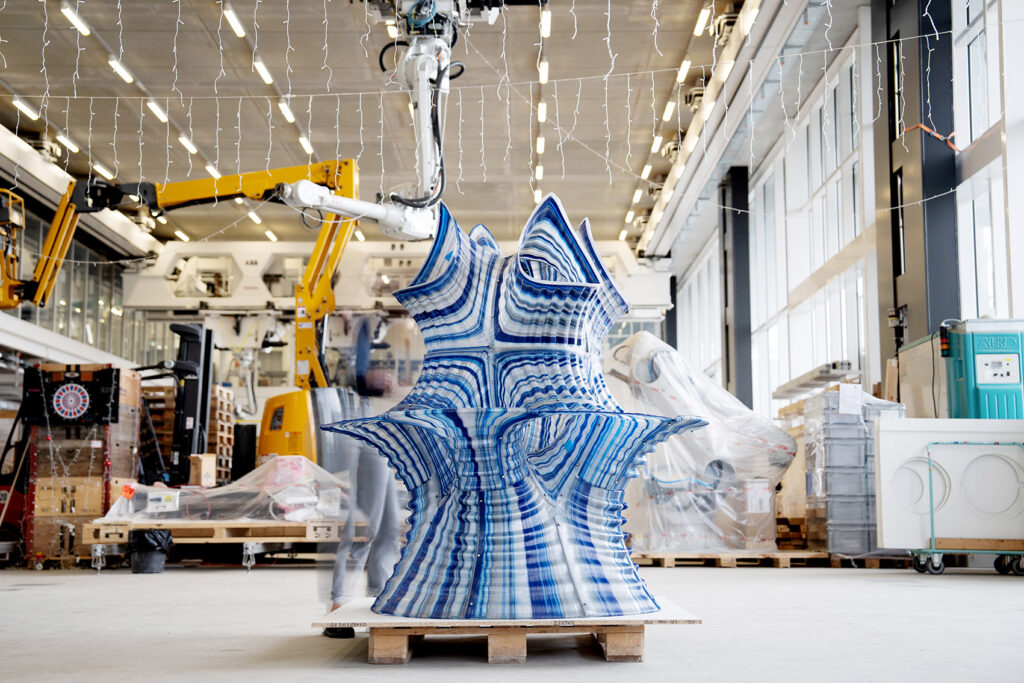
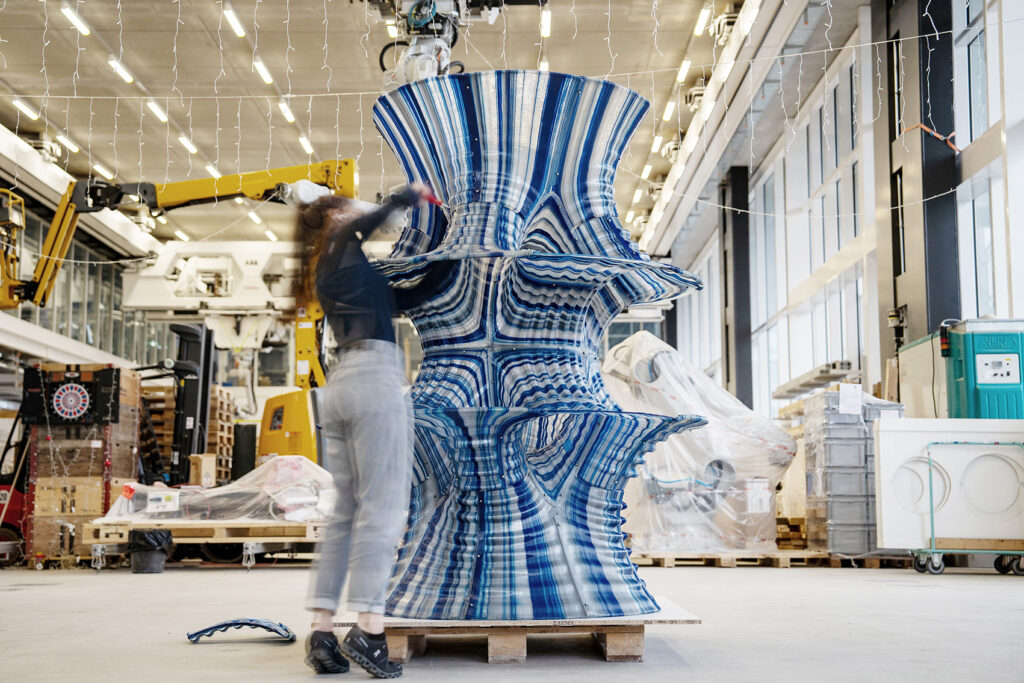
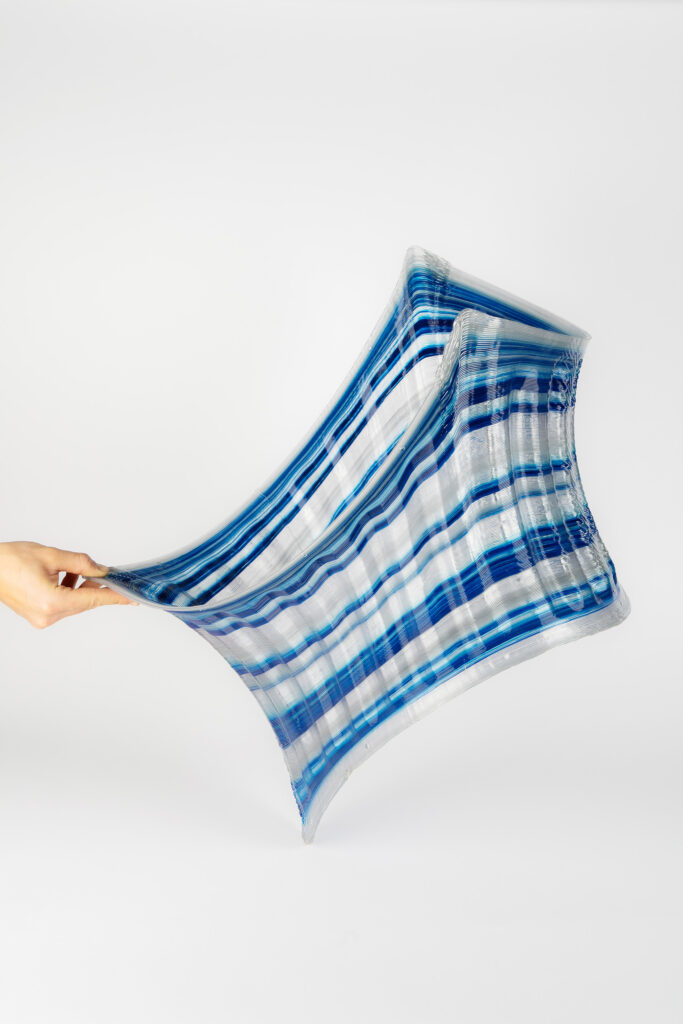

Acknowledgments
This project has been the large-scale demonstrator of my doctoral research titled Nonplanar Layered Morphologies at ETH Zurich, at the Institute of Technology in Architecture, chair of Digital Building Technologies, under the supervision of Prof. Benjamin Dillenburger.
Additional advisors: Prof. Olga Diamanti, and Prof. Amir Vaxman.
Technical support: Tobias Hartmann, Philippe Fleischmann, Matthias Leschok.
Documentation: Dominik Vogel, Andrei Jipa.
The methodology and innovations behind this work have been described in detail in the following publications:
Mitropoulou Ioanna, Vaxman Amir, Diamanti Olga, Dillenburger Benjamin, 2023. Fabrication-Aware Strip-Decomposable Quadrilateral Meshes. In: Computer Aided Design journal, Elsevier.
Mitropoulou Ioanna, Bernhard Mathias, Dillenburger Benjamin. 2025. Curvature-informed paths for shell 3D printing. In: Automation in Construction journal, Elsevier.
